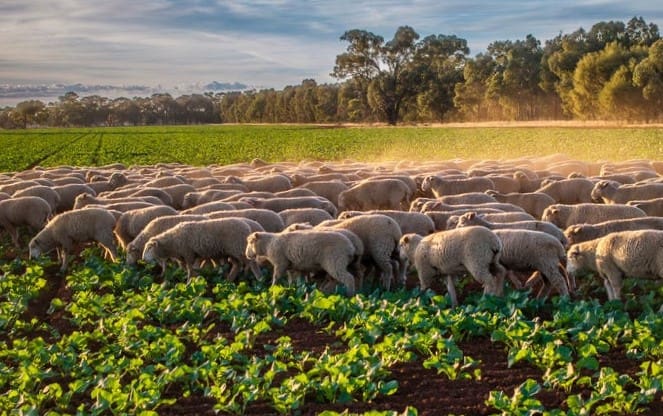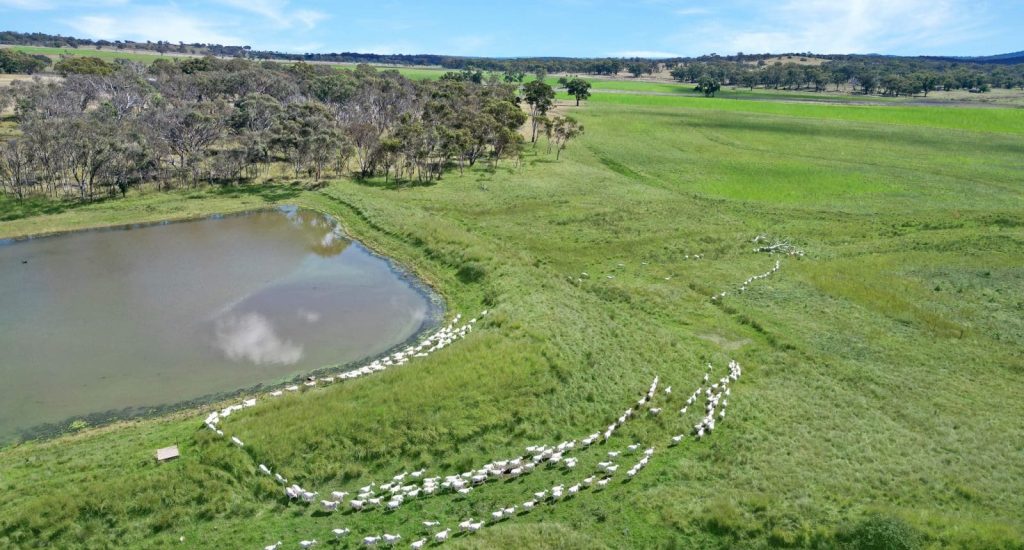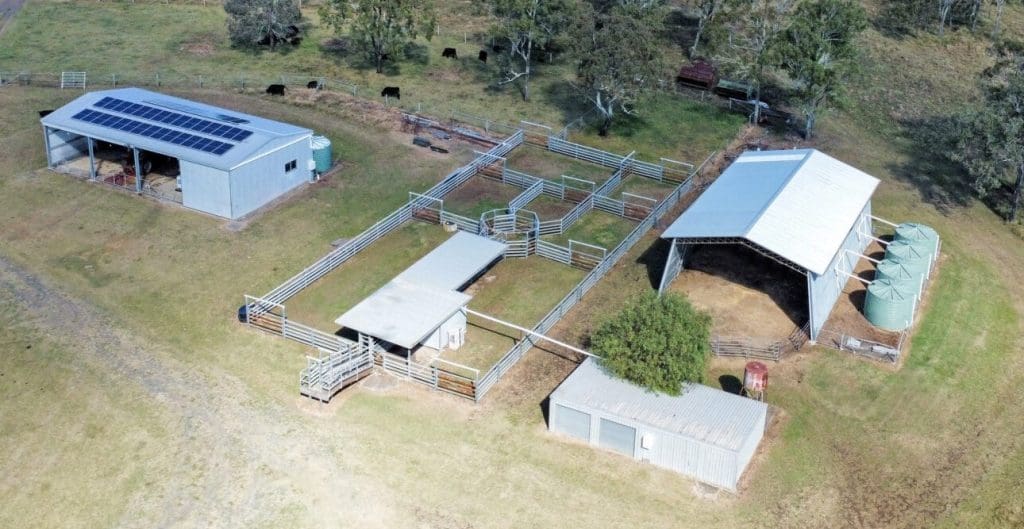Impressive Tara Moira in central western NSW
A bale a day holding lists after 35 years
New England’s Rockleigh Station offers grazing & fodder
Downsize impressively with Toowoomba’s Stanton
Impressive Tara Moira in central western NSW
THE largest contingent mixed farming operation in the Trundle district, in central western New South Wales, is being offered to the market by the retiring Watt family.
The 4327ha Tara Moira Aggregation was assembled over 70 years, and is being sold with 3331ha of crops.
Two adjoining properties spanning 1181ha have also been listed for separate sale, which means the landholding could be expanded to 5508ha.
The neighbouring properties comprise the 970ha Tara Moira and Steeton and the 211ha 1489 Carlisle-Trundle Road. Currently leased by the Watt family, the two holdings are also being sold by Elders.
Elders agents Brian McAneney and Chris Malone were unable to offer a price guide for Tara Moira; however, they described the aggregation as a landmark asset.
“To say it is ‘impressive’ is an understatement. Tara Moira boasts scale, productivity and versatility. It has an enviable combination of productive soils, first class infrastructure, reliable water and cutting-edge management.”
In November last year, major red meat processor Roger Fletcher and family secured the nearby 8828ha Darriwell Aggregation, a trophy enterprise owned by the Jones family, for a sum believed to be in excess of $43 million including almost 6000ha of crops.
The cropping and livestock powerhouse, comprising 19 holdings (some of which were contiguous), adjoins the Trundle township and attracted strong interest from both farming family entities and institutional investors.
Like the Darriwell Aggregation, Tara Moira’s scale and productivity are anticipated to generate inquiry from both corporate and family farming enterprises.
The open, level Kurrajong country on Tara Moira features red loams soils which, over the years, have benefited from the application of lime and manure from the feedlot, in addition to a comprehensive fertiliser program.
More than 95 percent is arable and produces winter cereals, oilseeds and pulses which are used in the feedlot.
The 2025 cereal planting includes 791ha of canola, 1709ha of wheat, 616ha of barley and 215ha of lupins, which are included in the sale.

Traditionally, the operation runs 5000 Merino and first cross ewes, producing prime first and second-cross lambs.
A modern 4000 head lamb feedlot turns off up to 19,500 lambs a year. All pens have gravity fed water and a return system which filters and treats the water as it returns to the header tanks.
The Tara Moira Aggregation is watered by 36 dams and a bore.
Infrastructure includes a four-bedroom home, three other residences, a four-stand shearing shed, four sheep yards, 1900-tonnes of grain storage and numerous sheds.
Expressions of interest close on July 2.
A bale a day holding lists after 35 years
Tim and Jenny Webb are auctioning their large-scale cropping and grazing operation on the banks of the Lachlan River in central western New South Wales after 35 years of ownership.
The 2933ha Monwonga Aggregation is situated near Bedgerabong and 48km from Forbes and once formed part of the historic Big Burrawang Station.
The station was established in 1819 and spanned more than 200,000ha, running up to 273,000 sheep and producing an impressive 5000 bales of wool annually.
Today, the legacy continues with strong wool returns. At its peak, the property has achieved ‘a bale a day’ or 365 bales in a year.
The Monwonga Aggregation boasts a long history of wool growing that continues today, is running a self-replacing Merino flock together with a dryland cropping enterprise.
The property has consistently carried 5000 to 6000 ewes and followers, as well as 2000 wethers with minimal supplementary feeding.
When the 1135ha Monwonga Aggregation was brought to market in September 2019, it consisted of Monwonga, Gloming and Wool Wash. Since then, the Webbs have added the neighbouring 663ha Aston Park to the portfolio.
Boasting 13km of Lachlan River frontage, 92 percent is arable with the alluvial river flats, red loams and black self-mulching soils suitable for growing cereals, legumes and oilseeds.
The property is well-watered by seven bores and 24 dams. Water use and works approvals are in place along 11km of the Lachlan River and some irrigation infrastructure is still in place.
The quality infrastructure includes a circa 1930s five-bedroom riverfront homestead, a three-bedroom workers cottage, a seven-stand shearing shed, two steel sheep yards, one steel cattle yards, a shearers quarters, numerous sheds and 3000 tonnes of grain storage.
Elders Emms Mooney agents Hugh Gooding and Chris Malone described it as a standout holding.
“Combining productivity, versatility and future potential, properties of this size, river frontage and calibre are hard to come by in this tightly held area.”
The Monwonga Aggregation will be auctioned on July 18.
New England’s Rockleigh Station offers grazing and fodder

default
Around $15 million is anticipated for what is described as an exceptional grazing and fodder opportunity in the New England region of northern New South Wales.
The 1961ha Rockleigh Station is situated in the heart of the renowned Sapphire district, 27km from Inverell, and can support 15,000 Dry Sheep Equivalents or 1000 cows and calves.
In 2018, Rockleigh Station was purchased by the Cunnamulla-based Kahmoo Pastoral Company (owned by the Thomas and Reid families) for water and grass, after failing to secure local country to agist or lease.
Today it is home to an established Australian White sheep enterprise, currently managing 3814 stud and commercial sheep, alongside dedicated infrastructure to support lamb feedlotting operations.
Rockleigh Station is anticipated to attract interest from existing landholders seeking expansion, high net worth families and producers looking for a good body of feed.
Around 30 percent of the property is arable grazing, 40 percent open grazing and the 30 percent balance is timbered grazing land, with around 90ha of improved perennial pastures and 438ha of fodder crops.
Significant investment has been made in soil health and pasture productivity through extensive pasture improvement and fodder development programs.
In 2022, a large-scale aerial fertilisation and seed broadcasting initiative was undertaken across 639ha to further boost pasture performance and sustainability.
In addition to sheep, cattle and fodder production, the vendors have a conservation agreement with the NSW Biodiversity Conservation Trust. Two paddocks, with a combined area of 304ha, are set aside to protect native vegetation, enhance the habitat for local flora and fauna and support long term environmental resilience.
Water security is provided by three equipped bores, 31 dams, seasonal watercourses in the Mary Anne Creek and Horse Gully, and a 40ML water entitlement, supported by an annual rainfall of 846mm.
Infrastructure includes two four-bedroom homes, guest accommodation, a two-stand shearing shed, steel sheep yards, cattle yards, numerous sheds, 245 tonnes of grain storage and 22km of exclusion fencing.
LAWD agents Simon Cudmore, George Barton and George Berry are handling the expressions of interest process for Rockleigh Station closing on July 3.
It is understood neighbouring properties could be open to selling, presenting an expansion opportunity for potential buyers.
Downsize impressively with Toowoomba’s Stanton

Noel Grant, the co-founder and managing director of the Grant Daniel and Long agency network and inaugural director of the Australian Livestock and Property Agents Association, is selling his productive and picturesque land close to Toowoomba.
The 129ha Stanton is located near Ramsay, 27km south of Toowoomba.
Nutrien Harcourts GDL agent Andrew McCallum said Stanton offers cattle, crops and lifestyle and should attract families and downsizing or retired producers.
“Some homes are built for seasons. This home is built for a lifetime with superior structural integrity and uncompromising quality in every detail.
Stanton is regarded as having exceptional country in a convenient location with excellent improvements.”
Around 56ha of the rich, productive deep alluvial chocolate soils can be cultivated, with 34ha currently planted to oats.
The balance is grazing pastures with shade lines and shelter, making it an ideal depot for breeding, backgrounding and fattening.
Stanton is growing a mix of grasses, including Queensland blue grass, rhodes, bambatsi, green panic and native pastures, capable of running 80 backgrounders, or cow and calf equivalent.
Infrastructure includes a 2015, four-bedroom, custom-built Arden Vale home, bathrooms with underfloor heating, a 250 plus head cattle yard capacity with four-way draft, scales and crush, undercover work area, sink and storage area, as well as machinery and commodity sheds with three-phase power and lighting.
Stanton is watered by two bores, two dams, a spring-fed creek and 70,000 gallons of rainwater storage. It will be auctioned on June 27.

HAVE YOUR SAY